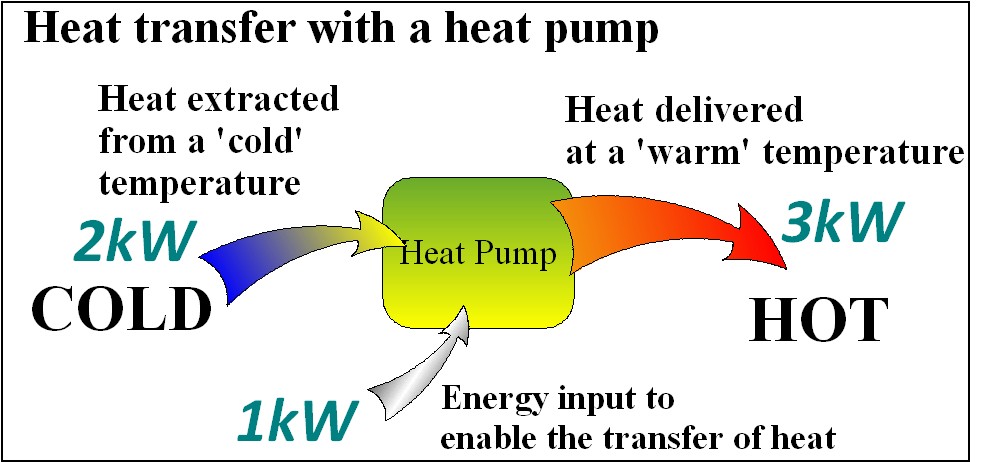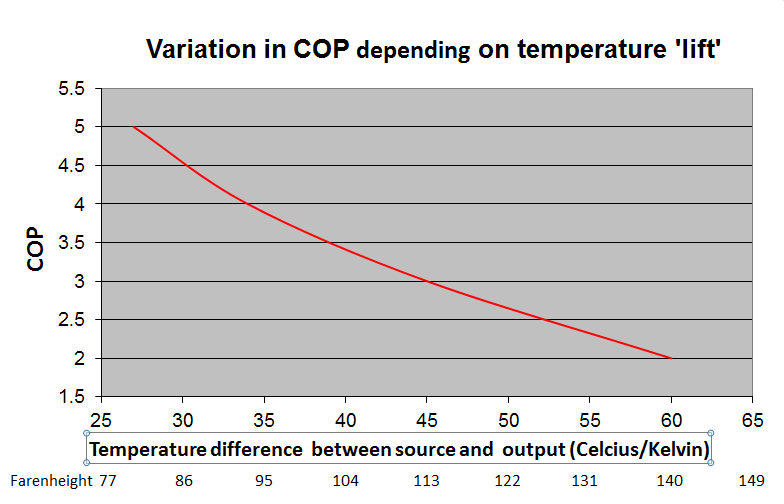The energy-efficiency of a boiler is usually quoted in percentage terms. e.g. If a boiler is said to be 90% efficient, then 90% of the gas energy ends up as useful heat to water, and 10% is lost as heat out of the flue.
Heat pumps require electricity to function. They transfer heat from outside, and the power input is typically between 1/2 and 1/5th of the available heat output. We normally use the ‘coefficient of Performance’ (COP) as the measure of efficiency.
COP = Heat output (Kw) divided by Electrical power input (kW)
In the example below the COP is 3, so 3 kWatts of useful heat are delivered to the house for the cost of 1kW of electricity. This is actually 300% efficient, and only possible due to the 2kW being extracted from the garden. (Note an electric heater is 100% efficient, or COP = 1 since all electricity ends up as heat)

The graph below gives an idea of the COP variations of a typical heat pump. This shows the difference in temperature between the source and the heat-delivery side. If you assume the heat pump’s source is zero Celsius, you can read the horizontal (X axis) scale as the heated water temperature.

Every heat pump should have some COP information on it data label. It shows ratings at various temperature conditions. Never read a COP figure without questioning what temperatures the figure relates to. They often show ideal conditions, and not worst-case condition.
The input power should include power for fans and pumps within the unit. It should also include any energy required for air source defrosts (maybe 10%).
SCOP and Seasonal Performance Factor (SPF)
The COP is the efficiency when operating at certain temperatures. It’s a reading for any one moment, and this will vary over the seasons. The SPF, and more commonly, the SCOP is a measure of the total annual heat delivered from a system compared to the total energy input to run the system. If electric supplementary back-up heaters are included, then these should include this. It should also includes any fans and pumps on the system. (beware.. this is not always the case).
The actual SCOP of a system (heat-meter output reading divided by the electric input meter) will be greatly affected by the whole system and the way that it is operated. If you want the highest SCOP, it may be more important to focus on the design and mode of operation rather than to get too hung up on the SCOP rating of the unit.
There is a COP estimator here for the technically minded